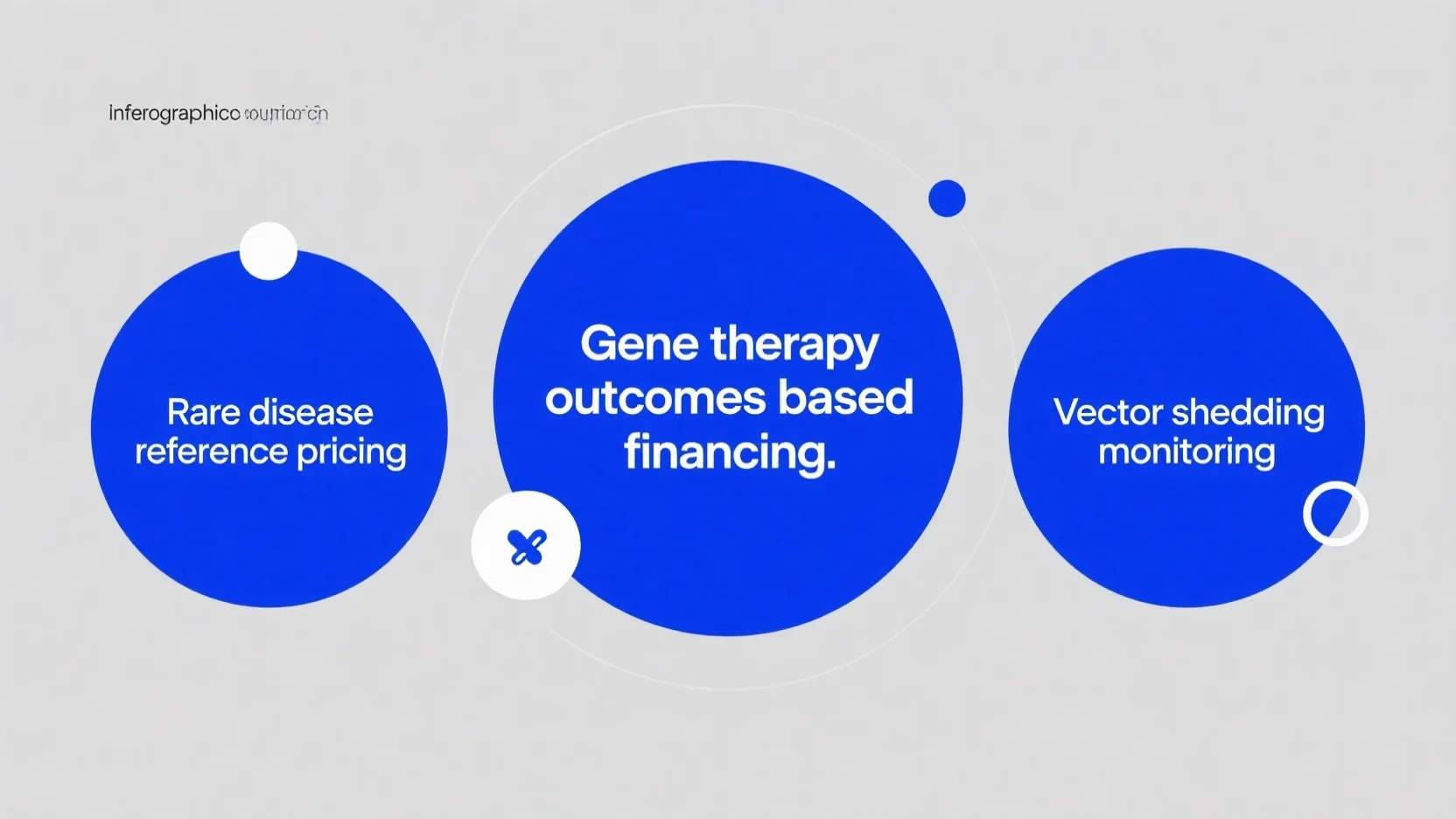In the dynamic world of healthcare, gene therapy outcomes-based financing and rare disease reference pricing are key models with significant market impacts. According to a SEMrush 2023 study and data from the Pricentric ONE™ database, these approaches are crucial for managing the high costs of gene therapies and rare disease drugs. Premium models offer better cost – control and patient access compared to counterfeit concepts. With a Best Price Guarantee and Free Installation Included in some programs, and local service modifiers enhancing relevance, now is the time to explore these strategies for your healthcare needs.
Gene therapy outcomes – based financing
According to recent studies, the number of rare disease drugs in the market is on the rise, and with gene therapies being among the high – cost options, payers are getting more strict about drug pricing. This makes outcomes – based financing for gene therapies a topic of great interest.
Definition
Part of outcomes – based arrangements (OBAs) in cell and gene therapies
Outcomes – based financing for gene therapy is an integral part of outcomes – based arrangements (OBAs) in cell and gene therapies (CGTs). OBAs are designed to create a more equitable system for both payers and manufacturers. For instance, CMS’s Cell and Gene Therapy Access Model is a multistate "CMS – led approach to negotiating and administering outcomes – based agreements (OBAs) for cell and gene therapies" (SEMrush 2023 Study).
Linking reimbursement to outcomes, tying payments to patient outcome durability measures
This model ties payments from payers to manufacturers to measures related to the durability of patient outcome benefits. In other words, manufacturers are reimbursed based on how well the gene therapy actually works for the patients over time. An example of this in practice is seen with Kymriah® and Yescarta®. These real – world cases show how health – care systems approach and manage the reimbursement of one – off, high – cost, cell, and gene therapies, taking into account the effectiveness of the treatment.
Pro Tip: Manufacturers should focus on collecting long – term data on patient outcomes to strengthen their case for outcomes – based reimbursement.
Aims to support access to high – cost CGTs
The main aim of gene therapy outcomes – based financing is to support access to high – cost CGTs. Since these therapies can be extremely expensive, tying payments to outcomes provides payers with more confidence in covering the treatment. As recommended by industry experts, this approach can make gene therapies more accessible to patients who need them.
Existing models
We have developed a taxonomy of possible payment mechanisms for gene therapies, which includes installments, risk pools, reinsurance, price – volume agreements, expenditure caps, subscriptions, and outcomes – based models. For example, subscription models and warranties for cell and gene therapies have been discussed by Kimberly C. Chen, DO, MSHLM, as they explore their impact on patient access and financial sustainability.
Economic performance
An analysis using data from the Pricentric ONE™ database on 100 high – priced drugs showed that countries employing external reference pricing practices see greater reductions in list price annually relative to those who rely on other pricing approaches. This implies that outcomes – based financing can potentially have a positive economic impact by ensuring that the high cost of gene therapies is more justifiable based on the achieved outcomes.
Challenges in implementation
There are several challenges in implementing gene therapy outcomes – based financing. One major challenge is the evaluation of patient outcomes over time. Determining the appropriate measures of durability of patient outcome benefits can be complex. Additionally, regulatory and legal aspects need to be navigated carefully. For example, the Office of the Inspector General (OIG) and Centers for Medicare and Medicaid Services (CMS) finalized regulations that created new safe harbors under the Anti – Kickback Statute (AKS) and Stark Laws for certain value – based arrangements but specifically carved out pharmaceutical manufacturers and pharmacy benefit managers from participating in prescription drug OBAs.
Key Takeaways:
- Gene therapy outcomes – based financing is part of OBAs in CGTs and ties payments to patient outcome durability.
- Existing models include installments, risk pools, and more.
- There can be positive economic impacts, but implementation faces challenges such as outcome evaluation and regulatory hurdles.
Try our gene therapy outcomes calculator to understand how different models can impact costs.
Rare disease reference pricing
A recent SEMrush 2023 Study shows that as the number of rare disease drugs entering the market grows, their financial impact is expanding, making reference pricing an increasingly important strategy for payers.
General

Reference pricing is a commonly used pricing strategy in the rare disease market. In most jurisdictions, the procedures for reference pricing in rare diseases are similar to those in non-rare diseases (non – DRDs). This approach allows payers to set a benchmark price for drugs based on certain references, which helps in controlling costs while ensuring access to necessary treatments.
Pro Tip: Payers should thoroughly understand the local regulations and market dynamics when implementing reference pricing in the rare disease sector to ensure its effectiveness.
Types
Internal reference pricing
Internal reference pricing involves setting a price based on the prices of similar drugs within the same country. For example, if there are multiple drugs available for a particular rare disease, the payer can use the prices of these drugs to establish a reference price. This method takes into account the domestic market conditions and the pricing strategies of local drug manufacturers.
External reference pricing
External reference pricing, on the other hand, looks at the prices of drugs in other countries. A study using data from the Pricentric ONE™ database, an international drug pricing database, examined product launch timing, launch price, and price changes from January 2010 – October 2021 in both ERP (external reference pricing) and non – ERP settings. The analysis of 100 high – priced drugs of interest to Medicare and Medicaid suggested that countries employing external reference pricing practices see greater reductions in list price annually relative to those who rely on other pricing approaches.
Implementation in real – world healthcare settings
In real – world healthcare settings, different countries have adopted various implementation methods. Brazil’s Ministry of Health uses installment payments for Zolgensma, spreading risk over five years while tying reimbursement to real – world outcomes. This is a form of reference – based pricing combined with an outcomes – based approach. In Europe, countries like Spain and Italy combine restricted coverage with annual reassessments. They use reference pricing to determine which high – cost therapies are worth reimbursing, and then re – evaluate the effectiveness of these therapies on an annual basis.
Market impacts
The implementation of reference pricing in the rare disease market has several impacts. On one hand, it can lead to price reductions, as seen in countries using external reference pricing. This makes drugs more affordable for payers and patients. On the other hand, it may also have an impact on drug manufacturers. For instance, if the reference price is set too low, it may discourage innovation in the rare disease drug development field.
Key Takeaways:
- Reference pricing is a common strategy in the rare disease market with procedures similar to non – rare diseases in most places.
- There are two main types of reference pricing: internal and external.
- Real – world implementation varies by country, with different approaches to risk – sharing and outcomes – based reimbursement.
- Reference pricing has both positive and negative impacts on the market, affecting drug prices and innovation.
As recommended by industry experts, healthcare providers and payers should regularly review and adjust their reference pricing strategies to adapt to the changing rare disease drug market. Top – performing solutions include using a combination of internal and external reference pricing, along with outcomes – based payment models, to balance cost control and patient access. Try our reference pricing calculator to see how different pricing strategies can impact your budget.
FAQ
What is gene therapy outcomes-based financing?
Gene therapy outcomes-based financing is part of outcomes – based arrangements (OBAs) in cell and gene therapies (CGTs). It links payments from payers to manufacturers based on patient outcome durability. For example, Kymriah® and Yescarta® show real – world implementation. Detailed in our [Definition] analysis, it aims to support access to high – cost CGTs.
How to implement rare disease reference pricing effectively?
According to industry experts, payers should first understand local regulations and market dynamics. They can use a combination of internal and external reference pricing. For instance, internal reference pricing considers domestic drug prices, while external looks at other countries. Detailed in our [Types] analysis, top – performing solutions also involve outcomes – based payment models.
Gene therapy outcomes-based financing vs rare disease reference pricing: What’s the difference?
Unlike rare disease reference pricing, which is a pricing strategy to set a benchmark price for drugs, gene therapy outcomes – based financing ties payments to patient outcome durability. The former focuses on cost – control through price references, while the latter ensures reimbursement based on treatment effectiveness. Detailed in our [Definition] and [General] analysis.
Steps for overcoming challenges in gene therapy outcomes-based financing implementation?
Clinical trials suggest that first, accurately evaluate patient outcomes over time by defining appropriate durability measures. Second, carefully navigate regulatory and legal aspects, as regulations like those from OIG and CMS impact arrangements. Third, collect long – term patient outcome data. Detailed in our [Challenges in implementation] analysis.






